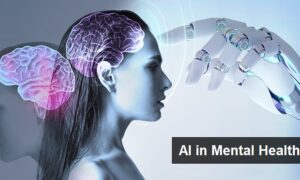
Introduction:
Quantum computing is a rapidly evolving field that holds immense potential to revolutionize various industries and scientific research. Unlike classical computing, which relies on bits to store and process information, quantum computing utilizes quantum bits, or qubits, which can exist in multiple states simultaneously, thanks to the principles of quantum mechanics. This unique characteristic opens up possibilities for solving complex problems that are practically infeasible for classical computers. In this article, we will explore the different types of quantum computing architectures that researchers are actively exploring. In this article you know more about quantum computing. Technical web blog is a platform which you can read new technology blog, latest technology blog & best technology blogs.
Gate-Based Quantum Computing:
Gate-based quantum computing, also known as circuit-based quantum computing, is a prominent approach to building a quantum computer. It revolves around manipulating qubits, the fundamental units of quantum information, using quantum gates. These gates perform operations on qubits, allowing for the execution of quantum algorithms.
In gate-based quantum computing, qubits can exist in multiple states simultaneously, thanks to the principle of superposition. This means that a qubit can represent both 0 and 1 at the same time, as well as any combination of these states. To perform computations, quantum gates are applied to manipulate the qubits and perform operations on them.
Quantum gates in gate-based quantum computing are analogous to classical logic gates used in traditional computing. They can transform the state of one or multiple qubits, allowing for the creation of quantum circuits. These circuits are composed of a series of quantum gates applied in a specific order to achieve the desired computation. Examples of gate-based quantum computing systems include IBM’s Qiskit, Google’s Cirq, and Microsoft’s Q#.
Adiabatic Quantum Computing:
Adiabatic quantum computing is an alternative approach to quantum computing that focuses on the adiabatic theorem of quantum mechanics. Unlike gate-based quantum computing, which manipulates qubits using quantum gates, adiabatic quantum computing relies on the principle of slowly transforming a quantum system from an initial state to a final state while maintaining it in the ground state throughout the computation.
The basic idea behind adiabatic quantum computing is to encode a computational problem into the ground state of a physical system. The system is initially prepared in a simple ground state that can be easily prepared and manipulated, and the Hamiltonian of the system is gradually transformed to represent the problem Hamiltonian, which encodes the problem’s solution.
According to the adiabatic theorem, if the system evolves slowly enough, it will remain in its ground state as the Hamiltonian is changed. By setting up the transformation in a way that the system evolves from the simple ground state to the ground state of the problem Hamiltonian, the solution to the problem can be obtained from the final state of the system.
Topological Quantum Computing:
Topological quantum computing is an emerging field in quantum computing that explores a unique approach to storing and manipulating quantum information. It is based on the properties of anyons, which are exotic particles that arise in certain two-dimensional materials and possess nontrivial topological characteristics.
In topological quantum computing, the fundamental units of quantum information, known as qubits, are encoded in the braiding properties of anyons. These anyons can be manipulated by braiding their paths with one another, creating a topological quantum gate. The braiding of anyons gives rise to quantum entanglement and can be used to perform quantum computations.
The advantage of topological quantum computing lies in its potential for fault tolerance. Topological qubits are robust against certain types of noise and decoherence, making them more resilient to errors caused by environmental disturbances. This fault tolerance property is crucial for building reliable and scalable quantum computers.
Quantum Annealing:
Quantum annealing is a computational approach that utilizes the principles of quantum mechanics to solve optimization problems. It is a specific implementation of quantum computing that focuses on finding the global minimum of a given objective function.
The concept of annealing in physics refers to the process of slowly cooling a material to reduce its defects and reach a low-energy state. In quantum annealing, this idea is applied to optimization problems. The objective is to find the lowest-energy configuration (corresponding to the minimum of the objective function) among a set of possible solutions.
Quantum annealing machines, such as the D-Wave Systems’ quantum annealers, are designed to perform this optimization process. These machines are built using qubits, which are the fundamental units of quantum information. Qubits can represent both 0 and 1 simultaneously, allowing for the exploration of multiple configurations in parallel.
Optical Quantum Computing:
Optical quantum computing leverages the properties of photons, particles of light, to perform quantum computations. It utilizes single photons or entangled photon pairs as qubits and manipulates them using various devices such as beam splitters, phase shifters, and detectors. Optical quantum computing has the potential to provide scalable quantum systems due to the long coherence times of photons.
Conclusion:
The field of quantum computing is rich with various types of architectures, each with its unique advantages and challenges. Gate-based quantum computing, adiabatic quantum computing, topological quantum computing, quantum annealing, and optical quantum computing are just a few examples of types of quantum computing being explored. As research and development continue, we can expect further advancements in these architectures and the emergence of new types of quantum computing systems, bringing us closer to harnessing the full power of quantum computation for solving complex problems.




